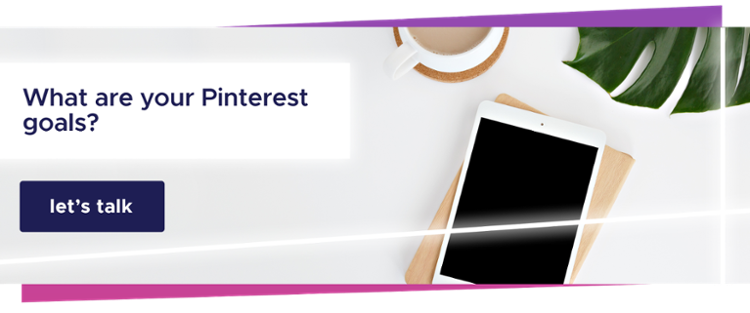Being a design influencer looks like so much fun. Being a photogenic person existing in a gorgeous, one-of-a-kind space, where the light hits you just so, and casually posting photos and blogs and watching the likes and fawning comments roll in. The reality is getting that perfect photo takes backbreaking work, more than simply standing in the perfect lighting. It involves sourcing, staging, writing, research and creativity. To get to the comfortable, profitable place you need to produce consistent, quality content. It may look effortless, but a lot of work goes into developing a killer personal brand.
Being a design influencer is part art, part science, and all hard work. Luckily for you, some of the design influencers we partner with have shared their tips for success.
True to you
Let’s talk about Joanna Hawley, the Seattle-based blogger behind Jojotastic. Hawley, a product designer and trend scout for companies like Anthropologie, was invited to join Pinterest before it was open to everyone. She started her blog to leverage the popularity of her Pinterest and to give companies interested in working with her a way to contact her. She landed her first sponsorship deal within three months of starting her blog.
And when Hawley began looking to buy a home, she let companies know that she was about to take on a home décor and renovation project—and that she had 3.7 million Pinterest followers. Companies including Decoist, Sherwin Williams, Rejuvenation, The Mine, CB2, All Modern, Pottery Barn, Parachute Home and Barn and Willow, happily jumped on the opportunity to partner with her, and ended up paying for a huge part of her remodel and helped furnish her tiny house.
And while you may think her giant audience is the moral of the story, there’s a lot more to her success than that. When Hawley was laid off, she got into the world of blogging by reaching out to Joy Cho from Oh Joy! on a whim. Cho brought her on to contribute to biweekly round-ups, giving Hawley the opportunity to learn from one of the best in the biz.
Hawley was at the forefront of the tiny house trend and has built her brand on providing small space tips, home tours, and inspiration for choosing to live small. She’s also been open about the less-then-photo-ready side of her life, sharing what her home looks like when it’s not staged to divine perfection.
So, the real takeaway is, as an aspiring influencer, you need to know your brand inside and out: Hawley utilized her education in industrial design and photography to define her visual brand, her honed job skills of cataloging and categorizing to curate her boards, built relationships with other bloggers and brands, and followed her heart and instinct to invest in a tiny house. What she had is the one thing you can’t fake as an influencer: authenticity.
If you want to be a successful influencer, you have to be real, honest, original and true to you. Being authentic will help you increase your engagement rate, generate organic traffic to your website, and increase visibility—and help you gain new followers. And it’s not just to gain followers: Brands prefer collaborating with an influencer who can generate authentic stories for their brand.
Authenticity is a word that gets thrown around a lot, when we say it we mean: No one likes being lied to or mislead. Can you clear the clutter before you take a photo? Yes, please do! But don’t be disingenuous or promote products you don’t love. Only partner with brands that fit with your personal brand, otherwise, the partnership could have a negative impact on the brand as well as on you. Followers can smell phoniness a mile away.
Read why partnering with the right influencer matters.
Get social with your audience
This sounds easy enough, and it will be at first, because you won’t have a big following. Like and respond to every comment, follow people back, make sure that you are making moves to form a much-needed connection with your followers.
One of the worst mistakes you can make on social media is having zero interaction and personality. No one likes someone who just talks about themselves. The same is true of influencers. This is the age of transparency and people want to get to know you and your brand on a more personal level. And that means they expect you to want to know them, too.
When you see something you like in other people’s content, don’t just like it or share it, also reply with a comment to start a conversation. Other tips include:
- Always @mention people you reference in your posts
- Reply when people @mention you or share your content
- When someone asks a question, answer it
Kate Pearce of Kate Pearce Vintage has found a unique way to engage with her audience, while driving weekly traffic to her Instagram stories and blog. She turned her followers’ questions about how to grow an Instagram following into a series of blog posts. Every Sunday she posts a question box in her Instagram stories where readers can drop in questions for her, and then every Monday she shares her answers to her questions on the blog.
When it comes to numbers, it’s easy to obsess over your follower count, and while there is value in increasing the number of followers you have, other metrics are just as important. Basically, having fewer followers who regularly engage with you and your content is infinitely more valuable than having 100,000 followers that ignore you.
Ask yourself:
- What percentage of your followers are active and engaged with your page and content?
- What’s your average number of likes or shares?
Once you have a handle on what your statistics are, you can begin to analyze what content is resonating the most with your audience.
Ask yourself:
- Do specific types of posts have more likes, comments and shares than others?
- Do you see a lift in new followers when you share a specific kind of post or use a specific platform?
Pearce’s journey from vintage dealer to full-time Instagram/blogger was driven by focusing on what was working and adjusting her content to reflect that learning. Her first year was focused on selling vintage furniture and finds on Etsy and dabbling in Instagram. After being contacted by Apartment Therapy for a feature on her home, Pearce changed direction and focused on selling vintage and Instagram. And not long after, she refined her vision again and went full force into blogging and Instagram, leaving the world of vintage sales behind. Does Pearce still have a passion for vintage furniture? Of course, but that doesn’t mean focusing on it is the right fit for her brand right now.
Content is queen
Whether it’s videos or blogs or Instagram posts, the most important thing an influencer must do is to keep creating content. Create an editorial calendar, schedule posts, find a system that works for you and stick to it. Make sure what you are posting is useful, informative, engaging, and helpful to your followers. This will help you position yourself as an authority and reliable resource.
Creating content should be how you’re going to spend most of your time— your content is your brand, after all. Make sure you are investing your time and talent where it matters. And that includes promoting that amazing content.
Dare to be different
If every photo on your feed features versions of the same rattan bookcase, is your photo of yet another rattan bookcase going to stand out? Probably not. Home design trends are important to know about, but they aren’t as important to follow. Instead, get real with yourself. If the whole world is going gaga for glamour and your style is more simple and sleek, show that. Don’t be another voice in a chorus. Say what is true to you.
Time is on your side
Hawley started pinning years before she started her blog—which she launched in 2012., Kate Pearce launched what is now her blogging business in 2015. You’re not going to become an internet design sensation overnight. But follow the path of these successful design bloggers and you might be one someday.
Think you’ve got this personal branding under control? Now, let’s help you kickstart your partnerships with brands on a positive, professional note.




